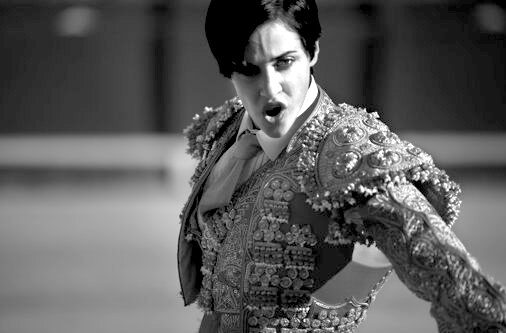This week we dwelled in melodrama as the frame through which artists deploy high style and feeling to tell a story, especially in film. On Tuesday we discussed Oliete-Aldea’s introductory essay on questions of transnationalism and genre, and we focused on the negotiation of melodrama, tragedy, and poetry to prepare for our discussion of the fourth film of one of the leading ‘foreign’ filmmakers inside peninsular borders, Julio Medem (Tierra / Earth; Vacas / Cows; La ardilla roja / Red Squirrel; Room in Rome; Ma Ma), whose Basque trilogy was followed by cinematic experiments such as Lucía y el sexo / Sex and Lucía (2001), and our movie of the week, the fin-de-siecle film Amantes del círculo polar / Lovers of the Arctic Circle (1998).

For this week’s blogpost, compose a reflection focused on how the film narrative (that is, the narrative composed with specific film signs such as planes, eyes/gaze, shots, location, light, looks, characterization, perspective, or proportion) works in Lovers to reinvent Spain by means of forgetting, renaming, re-placing, reconnecting, recognizing, or draw iconically in ways different to Catholic iconography.
This post has no deadline; please, make sure the posts do not accumulate for you at the end.

The film this week, Lovers of the Arctic Circle, was a poetic masterpiece by Julio Medem which explored the new transnational boundaries of Spain and themes such as freedom, love, lust, and fate. This film explores extra-Spanish characters, locations, and scenes which bring it onto the global stage not just in terms of development, but in terms of plot and symbolism. Being made in the late 20th century, this film is solidly post-Franco (being over 20 years after his death) and seems not to engage with many of the themes, symbols, icons that we have explored so far. There seems a lack of explicit religious images or iconography in this film as churches, crucifixes, virgins, convents, and even monogamy are nowhere present in the film. Even the funeral/death of the mother is only seen in pieces and also disengages any Catholic imagery. This is surprising as even in the 90s Spain was a predominantly Catholic country.
This seems to tie in with the perspective of the film as we are constantly ties to either Otto or Ana within the film (and late Ana’s eyes and Otto through Ana’s eyes). Neither of these characters seem to be engaged with Catholicism or religion in general. They do not look for signs of God or the church throughout their lives and so the audience does not see any of this either. Medem seems to be trying to escape the ever-present atmosphere of Christianity and other suffocating Spanish symbols that were all too common in Spanish lives and cinema prior to this decade. This film is also the first to truly depart from Spain in setting and place the main characters in Finland (as well as other character in Australia). This is a time of true transnationalism for film and for the characters within the film and Medem seems to be purposefully choosing how Spain is represented in his film. I guess, though I don’t know if this can be substantiated in the film or in other evidence, that Medem wants people to understand his film as not stereotypically Spanish or Catholic. This means departing from the common tropes of Spain as portrayed through global cinema. The Andalusian countryside is distanced as the film takes place in the Basque country (which is on the opposite side of Spain). The institution of marriage/sexual purity is questioned as none of the characters remain in a long term relationship. And no Catholic services, churches, or priests are hinted at or present in the film. Medem creates a truly unique film that is Spanish in name only and does not attempt to bring in any memories of historical Spain. This truly falls in line with the theme of transnationalism and Spanish film into an appeal to a global audience.
Lovers of the Arctic Circle is one of the only films from this semester without a looming sense of the Catholic Church. Made nearly 20 years after Franco’s death in a more modern, secular, and global Spain, this film is without direct reference to God or the church, and instead, relies on a narrative of the cyclical patterns of life, inserting its own spiritual philosophy onto the remarkable events that take place. More of a Shakespearian tale than a Biblical one, this film seems to subvert notions of a hyper-Catholic Spain. There is very little Catholic imagery, but most obviously is the martyrdom of Ana at the end, as she and Otto are finally reunited. However, the women in this film are not “Virgin Mary”-esque, instead engaging in multiple relationships and avoiding nurturing or motherly behaviors. In addition to avoiding direct references to Catholicism, Medem further subverts Franco’s Spain by crossing borders into other countries, where Otto’s family history transpired. The past and future of this story takes place abroad, rewriting the centrality of Spain. Even in moments where religion normally is centered, such as during Otto’s mothers death, instead his reaction is seen as consequential on his relationship with Ana, an alternative source of meaning for the characters. Medem creates a poetic reflection of a spiritual and global Spain, without relying on Franco era symbols of the country’s history.
The story of Otto and Ana is told through VoiceOvers as well as dialogue. This movie unlike the ones that come before it is lacking much catholic iconography that previously took hold of movies during Franco. After Franco fell the church lost some power and a bit of its role in society. The censorship died out allowing filmmakers to branch off from the original themes like religion. In this way they were able to explore more themes like love. This movie doesn’t really show anything about Catholicism, but it does show things Catholicism doesn’t allow. One example is divorce. Previous to his marriage Otto’s dad is divorced which is not something accepted by the Catholic Church. He also remarried a woman who is not a virgin, which is another factor that the Catholic Church would not support. It also includes premarital sex from Anna and Otto who are teenagers at the time. Following Otto’s mothers death, Otto is wrecked and he becomes fairly sexually promiscuous, leaving Ana. Sexual promiscuity was condemned by the church at this time. There is another form of sexual promiscuity where Ana’s mother leaves Otto’s father for another man whom she is seduced by. Eventually Otto and Ana’s love is ruined by Ana’s death. While the Catholic Church does seem to support love, it surely would not support this film because of the many anti-Catholic moments that happen. The lack of Catholic iconography as well as ideology is a testament for the changing times in Spain post-Franco.